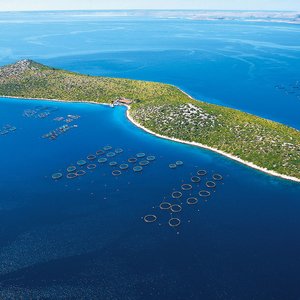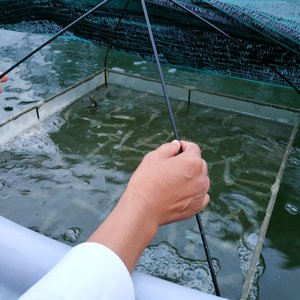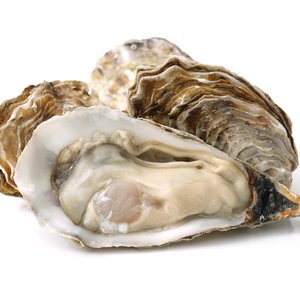Recent Nofima research in the CtrlAQUA Intake project Strategies for water treatment in closed-containment aquaculture showed that there is a lot of gain from adapting the dose of UV light to the pathogen one is dealing with.
In the process of disinfecting water with ultraviolet light (UV), special UV lamps are used that emit light of a certain wavelength, low pressure or medium pressure. These UV light waves are able to interfere with the DNA found in harmful microorganisms. UV dose is another characteristic crucial for disinfection. The harder is to kill a pathogen, the higher UV dose is required and vice-versa. According to adopted guidelines from the Norwegian authorities, there is a minimum UV dose to apply, 25 mJ/cm2.
However, using ultraviolet light is costly, both in the form of spent energy and special lamps. So, the question has to be asked: Does one need to use high doses on all the different harmful bacteria and viruses?
“Because UV treatment of intake water is so energetically costly, it will be more economically sustainable to use the exact dose that is necessary to eliminate a specific pathogen. Neither more nor less. We test different doses to find out which dose leads to a 99.9% reduction of various pathogens. We do not require particularly high doses for most pathogens,” said Nofima scientist, Vasco Mota.
Six pathogens investigated
Two master students, Kari Justad (The Arctic University of Norway) and Miguel Guerreiro (University of Algarve, Portugal), conducted their work at Nofima Tromsø laboratories. Together with Nofima technicians and researchers, they used two UV Collimated Beam Apparatus to investigate six different pathogens:
- Two virus, IPNV and ISAV.
- Three bacteria: Yersinia ruckeri, Moritella viscosa and Tenacibaculum spp.
- One copepodite: salmon sealice.
Two different UVC technologies of distinct wavelength lengths (λ) were used: a low-pressure (254 nm), and medium pressure (220-300 nm).
“IPNV is the only one of the five virus and bacteria we have tested that required a very high dose. Luckily there is a vaccine against it. All the other pathogens were eliminated using UV doses typically below 10 mj/cm2,” said Mota.
Seawater for the trials was collected at depths of 2 and 40 meters at two different sites: one close to a salmon farm, and one that was not influenced by fish farms. Two different UV-C techniques of distinct wavelength (λ) were used during the trials: low pressure of 254 nanometres, and medium pressure between 220-300 nanometres. In all the trials, 99.9% of pathogens were eliminated using a lower dose (and therefore lower cost) than the authorities require.
“These results may indicate that there is a need to assess the UV doses that are required to disinfect the intake water of aquaculture facilities, which could potentially reduce energy costs regarding UV disinfection. The exception in our trials was the IPN virus which required a high UV dose, but the existence of a vaccine for this virus reduces the need to eliminate it. All the other pathogens were eliminated using much lower doses,” said Mota.
“Lice is hard to kill with UV. At least without using absurdly high UV doses (> 100 mj/cm2),” said Mota.
Relevant on land and at sea
Water disinfection using UV is relevant for inlet water in land-based farms. This includes both flow-through systems and RAS, but also for semi-closed containment facilities at sea.
“However, facilities at sea pose a challenge because of the enormous volumes of water that are used - up to 100,000 liters of water per minute. It is not possible to use low-pressure UV when working with these amounts of water,” said Mota.
Aquaculture facilities are getting bigger all the time, and medium pressure UV is easier to scale up. “Medium pressure UV also attacks the proteins and enzymes, the machinery that the harmful microorganisms use to repair cell damage. As a result, UV disinfection efficiency is further strengthened,” the scientist said.
New trials will be carried out at four commercial fish farms in 2022. UV disinfection will be tested using clear seawater, which is common during summer and winter, and with more murky seawater, which typically occurs as a result of algae growth during spring and autumn.“We will not be adding pathogens in these trials. Instead, we will treat what is naturally found in the water,” ended Mota.












